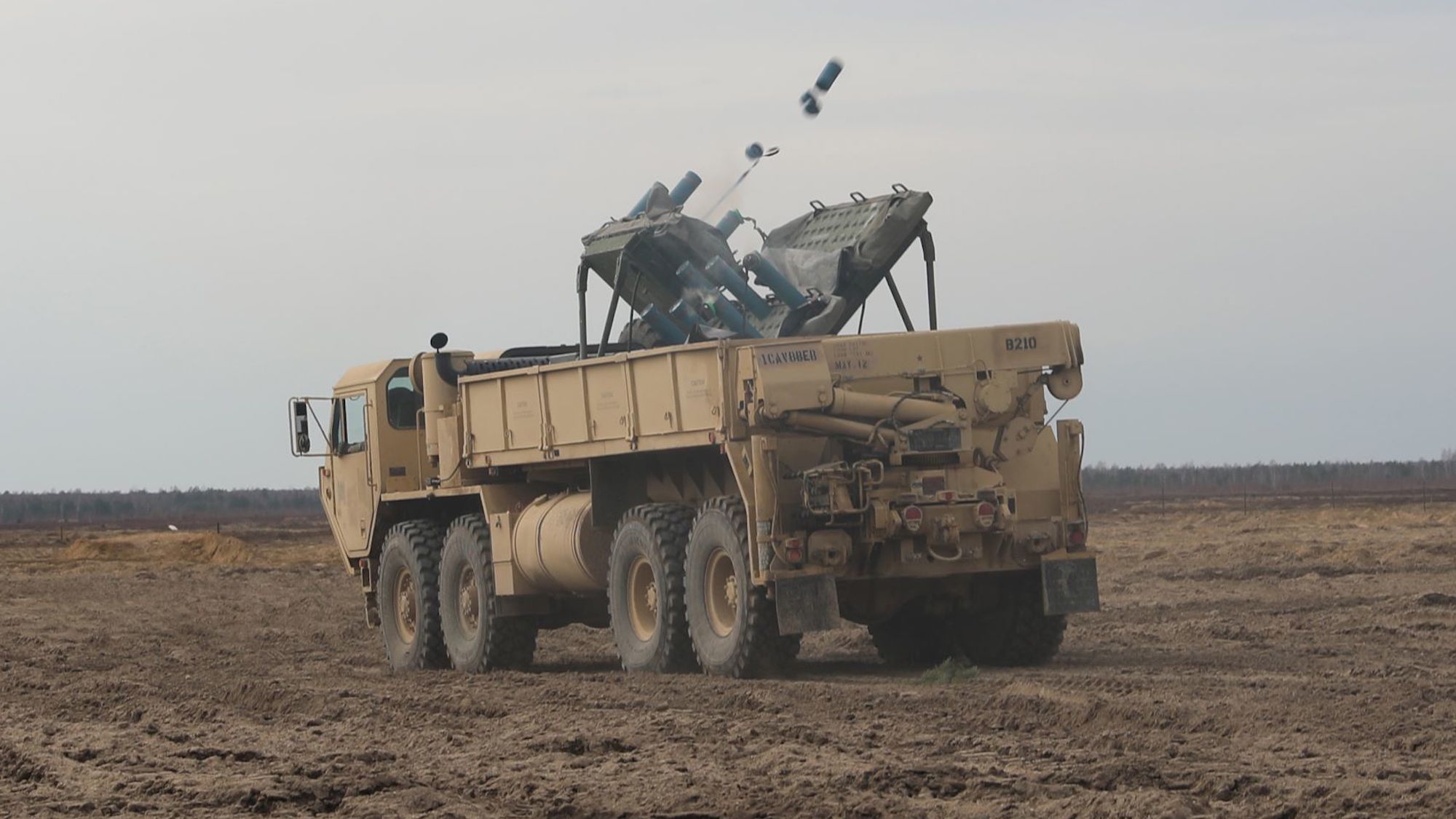

To better defend Taiwan in the face of a potential invasion, the United States is selling it Volcanos. More precisely, the United States is selling Taiwan the Volcano Mine Dispenser, a system that can rapidly hurl anti-tank landmines, creating a dangerous and impassable area for heavy armor. The Volcano is an older system, but its use in Taiwan would be brand-new, indicating the kinds of strategies that Taiwan and the United States are considering when it comes to how to defend the island nation in the future.
Land mines are a defensive weapon, though one that can certainly be used aggressively. Putting a landmine in place imperils all who would pass through the area, forcing attackers to face immediate danger or slow down their advances as they reroute around the hazard. What the Volcano does, specifically, is allow for the defenders to create a minefield rapidly.
“Using a ground vehicle, a 1,000-meter minefield can be laid in 4 to 12 minutes based on terrain and vehicle speed,” reads an Army description. The Volcano system’s mines can also be deployed by helicopter, and it can deploy anti-personnel mines, but the announcement from the State Department specifically mentions trucks for carrying and mounting the Volcano systems it is selling Taiwan, and mentions anti-tank mines.
Enemy mine
Every landmine is an explosive designed to detonate in the future. Anti-personnel landmines, as the name suggests, are used to kill people, and are prohibited by international treaties in part because of the threat they pose to civilians during and after war. (The United States is only party to some of the treaties regarding land mines.)
Anti-tank landmines have detonation thresholds that are harder to accidentally set off with anything except a vehicle, and are targeted squarely at the largest and deadliest vehicles on a battlefield. In addition, to ensure that the anti-tank mines are used for battlefield purposes, rather than permanently delineating a fixed border, their detonation fuses can be programmed to not work after a set amount of time.
“A Soldier-selectable, self-destruct mechanism destroys the mine at the end of its active lifecycle – 4 hours to 15 days – depending on the time selected,” declares the Army.
This fits into the larger role of mines as tools to change how battles are fought, rather than create static fronts. In the announcement authorizing the sale, the mines are referred to not as mines but as “munitions,” the broader category of all explosives fired by weapons. With the ability to cover an area, and then have that area be littered in active explosives for over two weeks, one way to think of the Volcano is as artillery designed to send explosives forward in both space and time.
Island time
As Russia’s invasion of Ukraine illustrated, landmines can have a major impact on how and where armies fight. Ukraine borders Russia by land, and even before the February 2022 invasion, the country had leftover explosives littering the landscape, posing a threat to life and limb. After the invasion, both sides used explosive barriers to limit how and where their foes could safely move. Placing landmines can be quick, while clearing landmines without loss of life or equipment usually needs specialized tools and time.
Taiwan’s unique position as an island nation gives it a meaningful physical barrier to hostile takeover. Unlike Russia into Ukraine, China cannot simply roll tanks over the border. An invasion of Taiwan, should the government of mainland China decide to undertake it, would have to be an amphibious affair, landing soldiers and vehicles by ship as well as attacking from the sea and sky.
“I think we’ve been very clear in the United States over multiple administrations, that Taiwan needs to put its self-defense front and center. We think the Chinese put a premium on speed,” said Deputy Secretary of Defense Kath Hicks at a security forum in December.
“And the best speed bump or deterrent to that is really the Taiwan people being able to demonstrate that they can slow that down, let alone to defend against it,” Hicks continued. “And that’s where the Ukraine example, I think, really can give the Chinese pause to see the will of a people combined with capability to stall or even stop a campaign of aggression.”
The Volcano is not the flashiest of tools for stopping an invasion by sea, but it does give Taiwan’s military options for how to stop invading forces once they have landed. By being able to place deadly, explosive barriers to movement where they’re needed, for likely as long as they’re needed, the Volcano can halt and restrict advances. It makes the assault into a mess of impassable terrain, blunting attacks with an eruption of explosive power.
